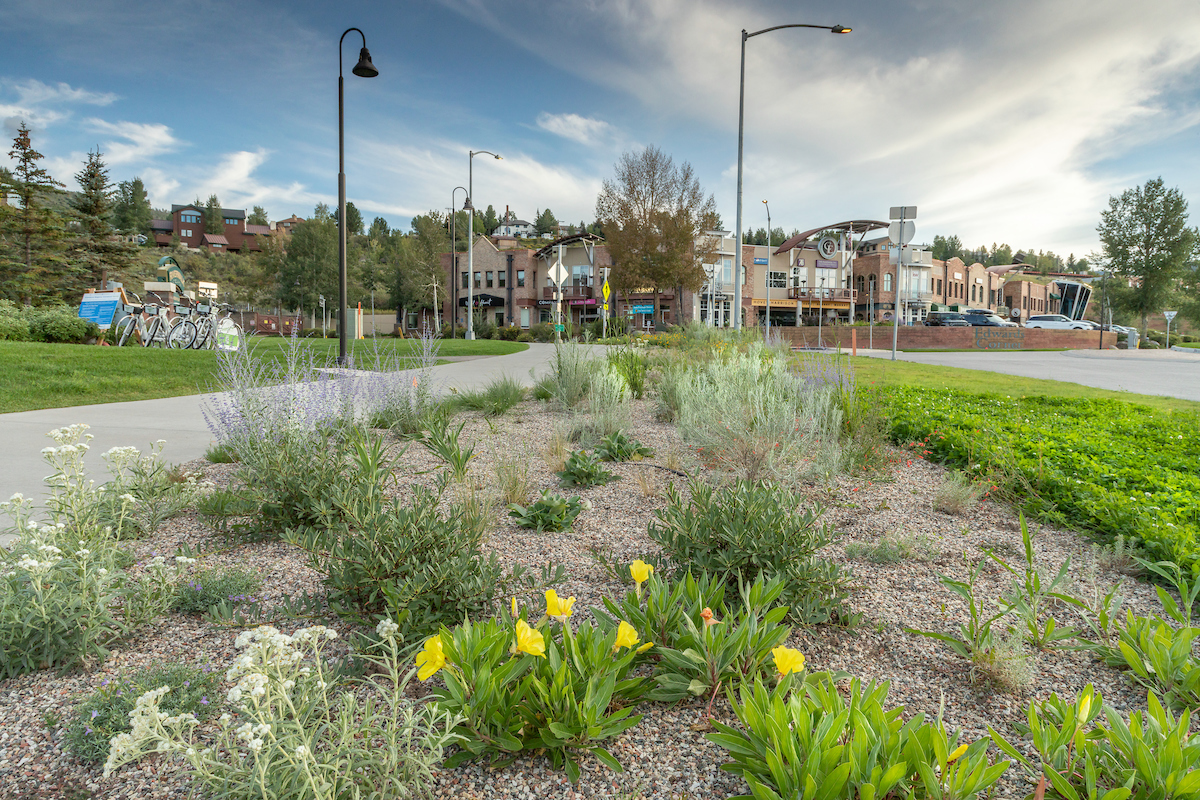
A water-wise demonstration garden at the Riverwalk in Edwards.Todd Winslow Pierce/Eaglevalleywild.org
In the springtime, as crabapple trees bloom and aspen leaves unfurl, the snow on local peaks melts away and irrigation systems get turned on. It is the perfect time to reflect on outdoor water use in our arid climate.
Kentucky Bluegrass, the most prominent type of turf grass in the United States, is a thirsty monoculture. Besides providing little benefit to our watershed, it requires between 40 to 50 inches of annual precipitation to keep it green and healthy. Since much of Eagle County only receives around 13 inches of rain annually, this species generally requires significant irrigation to augment precipitation.
As the cost of water increases and the threat of drought continues in the Mountain West, many are turning toward water-wise yards to reduce irrigation needs and keep water in rivers and streams. There are resources available for property owners here in Eagle County to start the turf replacement process, many from the Beyond Lawn Program. This is a partnership with the Eagle River Coalition, Eagle County Conservation District and Colorado State University Extension intended to empower communities to conserve water and enhance biodiversity through education, collaboration and guidance to foster sustainable landscapes.
Please visit BeyondLawn.org to learn more and find more resources. Read on for three top ways to conserve water this summer if you have a yard or outdoor space.
Match your hydrozones with your irrigation zones
- Hydrozoning involves grouping plants with similar water needs into the same irrigation zone. Plants requiring minimal water are placed together in one zone, while those needing more water are grouped in another. An example of when it can be helpful to take hydrozoning action is when turf grass (high water use) and perennials (low water use) exist in the same irrigation zone, which, without action, will mean you are either going to overwater your perennials or you will be underwatering your turf grass. Visit beyondlawn.org/hydrozones to learn more.
Evaluate your irrigation system for efficiency
- When was the last time you inspected your irrigation setup? Simple checks — like how long and when it’s set to run, whether any sprinkler heads are broken or if you’re watering sidewalks instead of your lawn — can make a big difference. A quick review can help you conserve water, lower your bill and keep your landscape healthy.
Start planning your landscape transformation
- Traditional turf grass requires a lot of water and provides minimal ecological benefits. Here are a few helpful considerations for property owners as they begin to explore water-wise landscaping.
- Remove non-functional turf grass. Non-functional turf is grass that serves no practical purpose — if the only time you or your household touch it is to mow it, it’s a good candidate for removal. Keep turf only where it’s actively used.
- Take it one step at a time. Transforming your yard can feel overwhelming, so don’t try to do everything at once. Start with small, manageable sections — ideally within a single irrigation zone to avoid mixing hydrozones.
- Add functional elements. Consider integrating flagstone or gravel paths to make your yard more usable and enjoyable.
- Get inspired by local waterwise gardens. In the Mountain West, waterwise landscapes can range from colorful perennial beds to vibrant native meadows. Visit BeyondLawn.org/plant-selection to explore ideas and see what you like.
